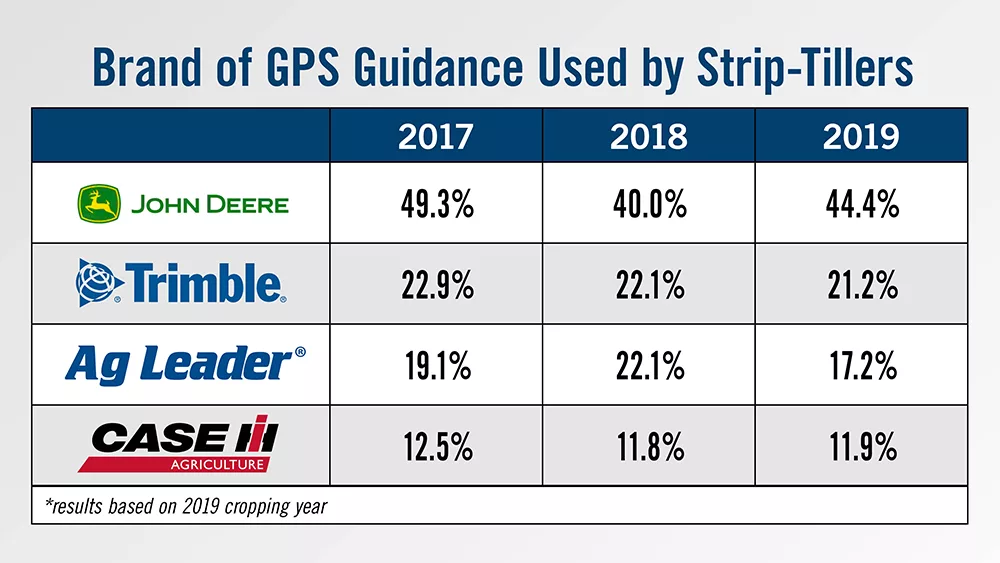Strip-till farmers have typically been among the most progressive adopters of precision technology, embracing tools including variable-rate seeding, implement guidance and unmanned aerial vehicles.
But RTK-level correction is often referred to as the most essential technology in a successful strip-till system, given the importance of accurately planting into a narrow strip of soil.
Results of the 7th Annual Strip-Till Operational Benchmark Study, which analyzed the 2019 cropping season of more than 200 strip-tillers from 35 states, revealed that use of RTK among strip-tillers topped 75%.
While still representing three-quarters of respondents, the percentage dipped below 80% for the first time in 5 years, with about 16% of strip-tillers saying they relied on either GLONASS or WAAS for GPS and about 8% noting they didn’t use any level of correction for strip-till.
So which is the most popular brand of GPS system among strip-tillers? For the sixth year in a row, John Deere topped the list by more than a 2 to 1 margin over the next most popular system. Some 44% of strip-tillers utilized Deere guidance, in 2019, up about 4 points over the prior year.
Trimble was the second most used system, by 21% of strip-tillers, followed by Ag Leader at 17% and then Case IH at about 12%.
Looking at what new technologies strip-tillers had added or plan to add in 2020, more than half of respondents cited variable-rate seeding and variable-rate fertilizer application systems as planned purchases this year.
Another 37% have added or plan to add implement guidance in 2020 and more than 28% plan to purchase ag data management service or support.
Look for more coverage of the 7th Annual Strip-Till Benchmark study as part of the upcoming AEI special strip-till market report coming soon.




![[Technology Corner] A Big Step Forward for Interoperability & Data Sharing](https://www.precisionfarmingdealer.com/ext/resources/2025/12/12/A-Big-Step-Forward-for-Interoperability--Data-Sharing.webp?height=290&t=1765565632&width=400)


